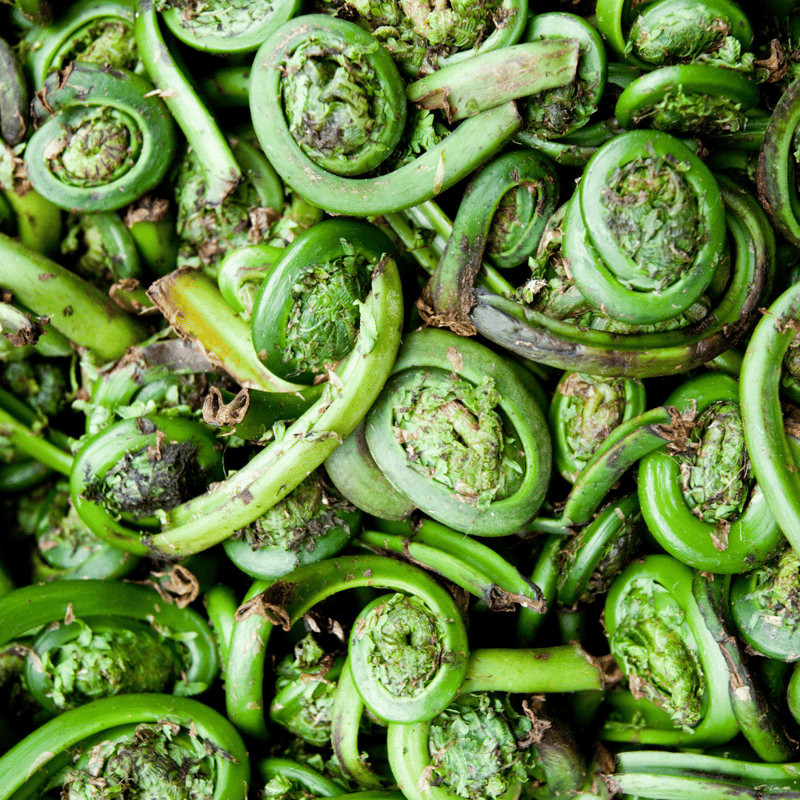
As the snow melts and the first green shoots push through the earth, a hidden feast emerges in the forests, fields, and along riverbanks.
Spring foraging, an ancient practice of gathering wild edibles, offers more than just a way to reconnect with nature; it opens the door to a world of unique flavors and unparalleled nutritional benefits.
At OnPoint Nutrition, where our commitment to harnessing the full potential of food for enhancing health is matched only by our dedication to informed, sustainable practices, we invite you on a journey of discovery.
We thought this would be a fun one!
Let's explore the vibrant tapestry of wild foods that spring has to offer, learning how to safely and sustainably gather them to enrich our diets.
Introduction to Spring Foraging
Spring is a special time that invites us back into nature’s arms. It's the perfect season to learn about foraging, a skill our ancestors used to find food straight from the earth. When we forage, we're not just picking plants; we're connecting with the outdoors and following in the footsteps of generations before us.
Foraging is about more than just finding food. It’s about discovering foods that are packed with nutrients you might not get from the grocery store. These wild plants add new flavors and health benefits to our diets that we can’t find anywhere else.
But there’s even more to it than that. Foraging also teaches us to be mindful and patient as we learn to spot these plants. It brings us closer to nature and helps us appreciate where our food comes from. This practice reminds us to take care of the land that feeds us.
Each time we go out with a basket and gather what we find, we're not just collecting food—we’re making a deeper connection with the natural world. Spring invites you to step outside, try foraging, and see how it can change the way you think about nature and food. Let this adventure enrich your body and spirit, just as it has for people throughout history.
Preparing for Spring Foraging
Before setting out, it's crucial to arm ourselves with knowledge and the right tools. It is crucial to familiarize yourself with safe vs. toxic plants to avoid harmful mistakes. 📣 DO NOT CONSUME ANYTHING WITHOUT A POSITIVE IDENTIFICATION. If you are a beginner, seek the help of experts for a confirmation.
🔎 This facebook group has many international experts that can help positively identify a plant prior to use: https://www.facebook.com/groups/156706504394635/.
Additionally, if you have broken this cardinal rule, take close up, high-quality photos of your plant or fungi and submit them to this international group of volunteer botanists and mycologists that identify these in EMERGENCY situations.
🆘 Poisons Help; Emergency Identification For Mushrooms & Plants

Don't worry, it's not all scary! Foraging can be very fun. Ensure that you are educated, prepared and excited to try something new!
Other must haves as you set out on the path:
- A foraging guidebook specific to your region
- a sturdy bag
- gloves & proper apparel
- a knife
Additionally, understanding local foraging laws and practicing ethical foraging ensures that we respect nature's limits and legality.
Nutrient-Rich Plants to Forage in Spring
These are great starts for those just beginning their journey of expanding their nutritional profile through foraging.
- Leafy Greens: Seek out wild spinach and dandelion greens for a boost of vitamins A and C, and nettles for their iron content. These early spring greens can invigorate our metabolism and replenish vital nutrients.
- Edible Flowers: Incorporating violet and dandelion flowers into our meals not only adds a splash of color but also infuses our diet with antioxidants. Try making jelly, syrup and other exciting creations!
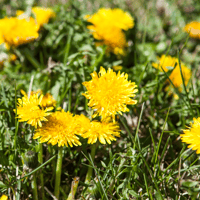 .
. 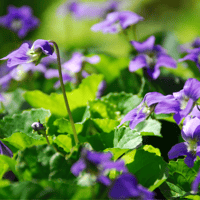
- Herbs and Wild Vegetables: Discover wild garlic, ramps, and chives for their health-enhancing properties, and don't overlook fiddlehead ferns and wild asparagus, which are excellent fiber sources. You can saute these up, add them to soups, and so much more!
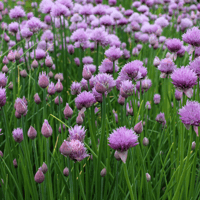
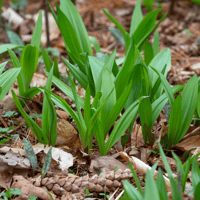
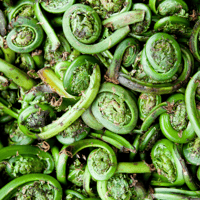
Foraging Tips and Techniques
Timing and technique matter. Early morning or late afternoon, when the plants are most vibrant, is ideal for foraging. Learning the correct way to harvest each plant ensures both personal safety and the preservation of these natural resources for future growth. For example, if you properly harvest ramps, you will have two-fold on the next spring to come! Don't deplete the cache!
Another important note: avoid harvesting anything from areas that are sprayed with herbicides and insecticides, including but not limited to along the roads and your own yard if you employ such methods.
Incorporating Foraged Foods into Your Diet
Foraged foods require proper cleaning and preparation. Preparing wild foods safely is crucial just like any other food and to avoid anything dangerous like ingesting harmful bacteria. Experiment with recipes that let the unique flavors of foraged foods shine, integrating them into salads, soups, and smoothies for a nutrient-packed meal.
Start off simple by adding them to salads, jellies, drinks, and other very simple staples as you get used to utilizing them. Join groups of other foraging experts or take a class to learn more!
The Role of Foraged Foods in a Balanced Diet
While foraged foods can significantly enhance our dietary diversity and nutrient intake, they should complement a balanced diet. The array of phytonutrients found in wild edibles can support health in ways that cultivated foods might not, contributing to a holistic approach to well-being. Wild plants bring a unique set of nutrients to our plates, offering health benefits that our regular store-bought foods might lack.
Here’s a closer look at how incorporating wild foods can enhance your diet and overall health:
Benefits of Including Foraged Foods in Your Diet
- Increased Nutrient Diversity: Wild plants often have higher levels of vitamins and minerals compared to some cultivated foods. Foraging adds a variety of new nutrients to your diet.
- Unique Phytonutrients: Phytonutrients are compounds that help protect your body against diseases. Wild edibles are rich in these beneficial compounds, supporting your health in ways that regular vegetables and fruits might not.
- Natural and Organic: Foraged foods are completely natural and free from agricultural chemicals like pesticides and fertilizers, making them a clean and healthy choice.
How to Balance Foraged Foods with Your Regular Diet
- Mix and Match: Don’t rely solely on wild foods. Combine them with other healthy foods from the grocery store to ensure you get all the nutrients you need.
- Variety is Key: Just as with any diet, eating a wide range of foods is important. This ensures that you’re getting a balanced intake of nutrients.
- Consult a Professional: If you're unsure about how to safely incorporate wild foods into your diet, consider talking to a nutritionist. They can help you create a meal plan that’s both nutritious and safe.
Things to Keep in Mind
- Identification: Make sure to accurately identify wild plants to avoid consuming anything harmful. Use field guides or apps, or go foraging with an experienced guide.
- Sustainability: Practice sustainable foraging by taking only what you need and leaving enough behind for the ecosystem and other foragers.
Incorporating foraged foods into your diet isn't just about trying something new—it's about enhancing your health and connecting with nature in a mindful way. By adding these wild edibles to a well-rounded diet, you’re taking a holistic approach to your well-being, tapping into the diverse bounty that nature offers us.
Picking Up Some New Steps to Health
Spring foraging is more than a hobby; it's a lifestyle that embraces the bounty of nature, nutritional enrichment, and ecological responsibility. As we learn to identify, gather, and prepare wild foods, we take active steps toward a healthier, more sustainable life connected to the natural world.
At OnPoint Nutrition, we're passionate about exploring every corner of the nutrition world, even those often overlooked like the art of foraging. While we specialize in online nutrition coaching rather than foraging, we believe in enriching our clients' diets with a variety of nutritious foods, including those you can gather from nature.
We hope you enjoyed this snapshot of a HUGE world that is sadly often forgotten, but so very interesting and delightfully pleasing.
Further Resources
For those eager to dive deeper, a wealth of resources awaits:
By embracing the art of foraging, we not only enrich our diets with unique, nutritious foods but also foster a sustainable relationship with our environment.
While we are not experts on foraging, there is an entire world of nutrients out there waiting to be explored! We at OnPoint Nutrition are here to guide you through integrating a variety of nutrient-rich foods, ensuring a journey that's as informed as it is enriching.
The journey into the heart of spring's natural abundance is just beginning.
Topics

With a knack for turning complex nutrition facts into engaging, relatable content, she’s on a mission to make healthy living fun and accessible. Backed by a stellar team of Dietitians and Nutritionists, Abby breathes life into OnPoint’s mission, inspiring others to embrace the transformative power of good nutrition. Her infectious enthusiasm and innovative approach make her a driving force in the journey towards better health for all.




